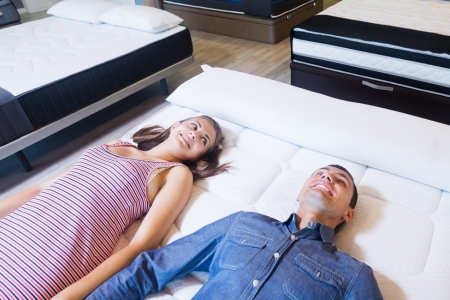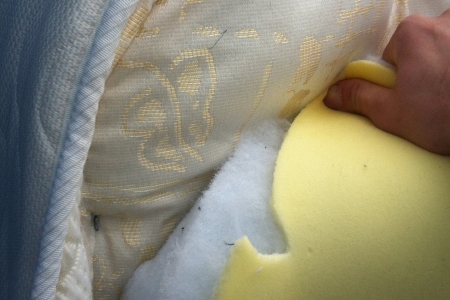The latest survey conducted by the National Bed Federation (NBF) highlights notable shifts in consumer behaviours regarding mattress and bed purchases.
Key findings show that individuals aged over-55 are less inclined to invest in 'eco-friendly' mattresses, while the impact of social media on purchasing decisions continues to rise. Additionally, the proportion of consumers buying secondhand mattresses has significantly declined.
The 17th annual NBF Consumer Bed Buying Survey, which questioned 1000 adults who purchased a new mattress or bed within the last year, reveals that while 73% of respondents are willing to pay more for a ‘greener’ mattress – one designed to avoid landfill disposal – only 59% of those over-55 felt the same way. In contrast, younger age groups demonstrate a much higher willingness to pay for sustainable options, with only 14% of respondents aged over-55 willing to pay between +11-20% more – this figure rises to 37% among 35-44-year-olds and 36% among 16-24-year-olds.
Despite economic challenges, consumers are spending more on mattresses, with the average price increasing by +8.4% to £645, up from £595 in 2024. Notably, 72% of shoppers spend up to £799, while 40% are opting to spend less than £400.
The standard UK double bed remains popular. However, an increasing number of consumers are opting for larger sizes, with 10% choosing super-king-size beds compared to just 5% in the previous year.
Roll-up mattresses are becoming less popular, with only 23.5% of respondents buying them, down from 26% two years ago. Foam mattresses remain the top choice for 44% of respondents, particularly for young buyers, while older consumers favour pocket springs. Memory foam has seen a slight decrease in preference, falling from 48% to 42% for comfort layers, while natural fillings account for 12%.
Mattress-only purchases are leading the market at 52%, marking a decline from 55% last year. Divan sets have seen a slight increase, rising from 17% to 19%. Meanwhile, the popularity of bedsteads continues to grow, with 29% of purchases including mattresses with bedsteads, up from 27% in 2024 and 24.5% in 2023. This trend is especially pronounced among 25-34-year-olds (50%) and 16-24-year-olds (40%). Conversely, traditional divan bases remain a favourite among the over-55 demographic, at 19%.
Add-on sales show promising growth, with 66% of consumers purchasing pillows, 69% buying duvets and sheets, and 49% selecting mattress protectors. Notably, 28% of those who purchased a mattress later bought topper pads, indicating that many consumers struggle to find the right mattress on their first attempt.
The growing influence of social media in consumer research is evident, with 20% of respondents using social platforms for pre-purchase insights, a rise from 17.5% last year. The 25-34 age group is the most active demographic in this regard, at 38%, while 30% of 16-24-year-olds also used these platforms. Over a quarter (27.5%) of respondents aged 35-44 joined them in their mattress research, whereas only 6% of over-55s used it, preferring traditional information sources.
Purchases made from national furniture and homeware stores accounted for nearly a quarter of sales, up from 20% last year. In contrast, the percentage of secondhand purchases halved, from 4% to 2%. Additionally, the practice of buying mattresses from the back of vans, strongly discouraged by the NBF, also decreased from 2% to 1%.
The NBF Consumer Bed Buying Survey was conducted by Censuswide between June and July 2025, based on a nationally representative sample of 1000 individuals who purchased a bed or mattress in the previous 12 months.
Photo courtesy Pexels/Kaboompics.com












